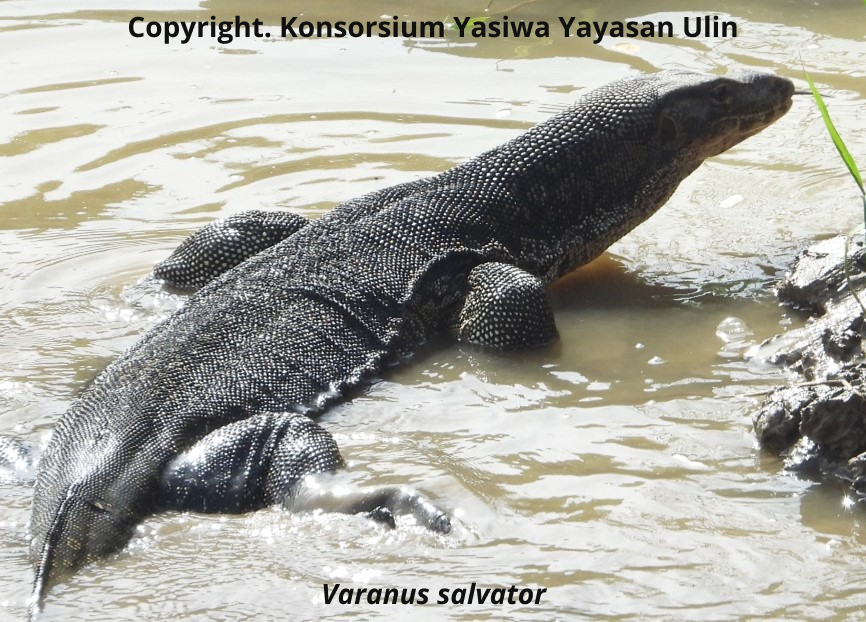Status Konservasi : Least Concern (LC)
Status Perlindungan : Tidak Dilindungi (TD)
Status Perdagangan : Apendiks II (II)
Varanus salvator
(Laurenti, 1768)
Varanidae
Nama : Biawak Air/Common Water Monitor
Deskripsi : Kepala meruncing. Kulitnya kasar dan berbintik-bintik kecil agak menonjol. Warna tubuhnya hitam dengan bercak – bercak tutul dan bulatan berwarna kuning pucat dari bagian atas kepala, punggung, hingga pangkal ekor. Biawak air adalah spesies reptil terbesar kedua di dunia, dengan panjang tubuh mencapai 3 meter atau lebih.
Habitat : Suka berada di pinggiran sungai atau rawa-rawa hutan. Terkadang tinggal di daerah pertanian, perkebunan, hingga pemukiman. Ditemukan di habitat sungai yang tenang dengan pasir dan kerikil di dasarnya, serta di hutan-hutan dataran rendah.
Sebaran : Bangladesh, HongKong, Myanmar, Laos, Vietnam, Kamboja, Thailand, Malaysia, Indonesia.

